Hey there bird enthusiasts! If you’re an avid bird watcher in California, then you’re in for a treat.
In this article, we’ll be exploring the fascinating world of black birds in the Golden State.
From majestic ravens to striking blackbirds, we’ll be delving into the top 10 types of black birds you can spot in California.
So grab your binoculars and get ready to discover these beautiful feathered creatures that call California home!
| Image | Name |
|---|---|
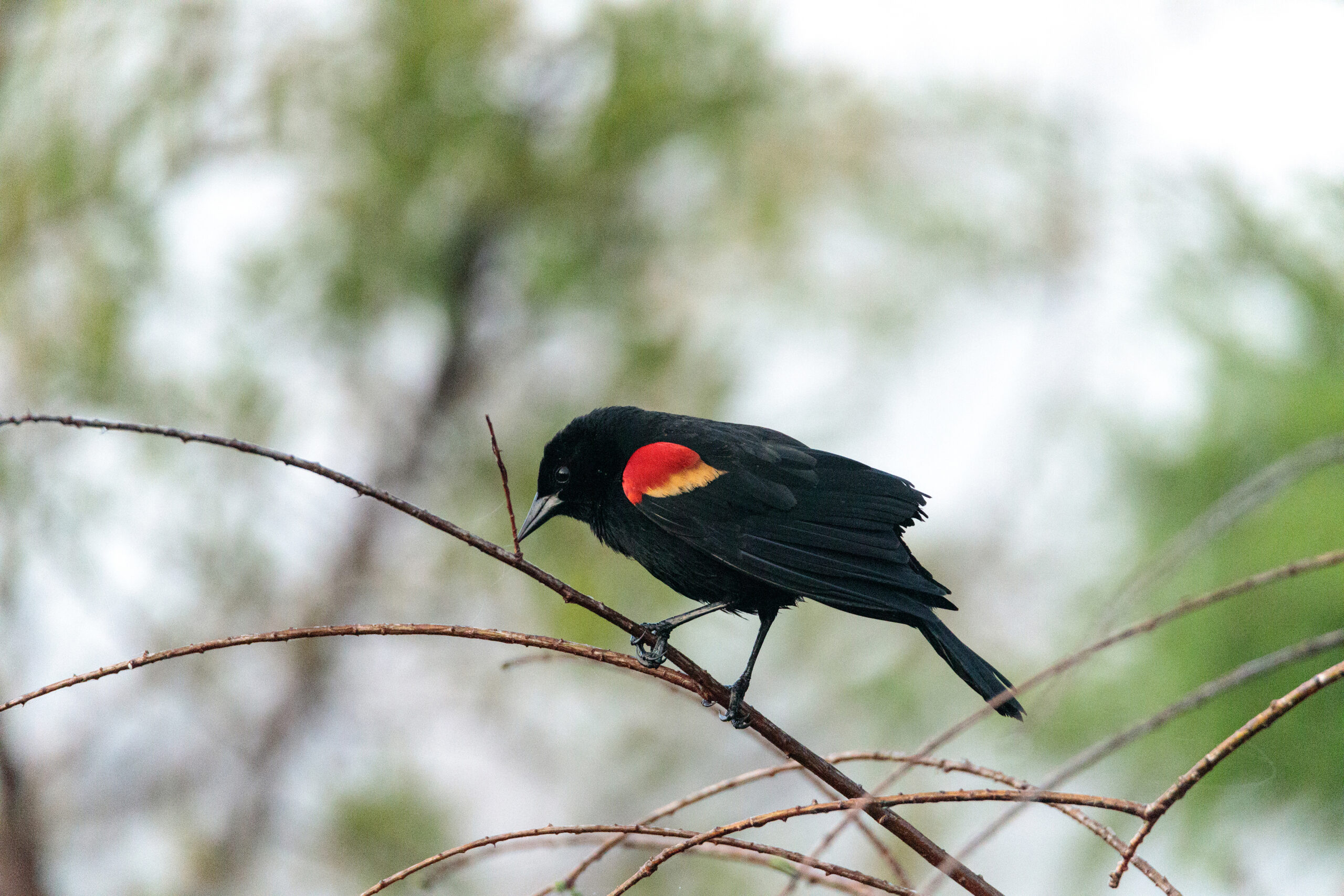 | Red Winged Blackbird |
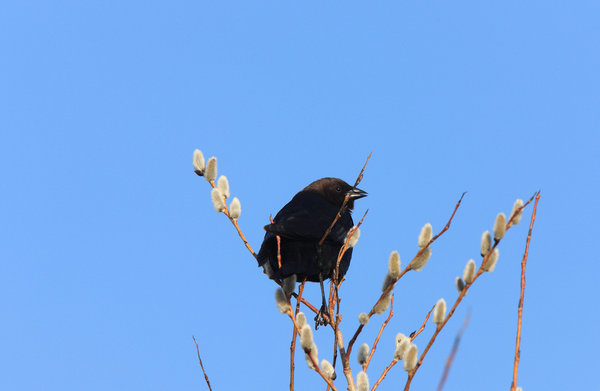 | Brown-Headed Cowbird |
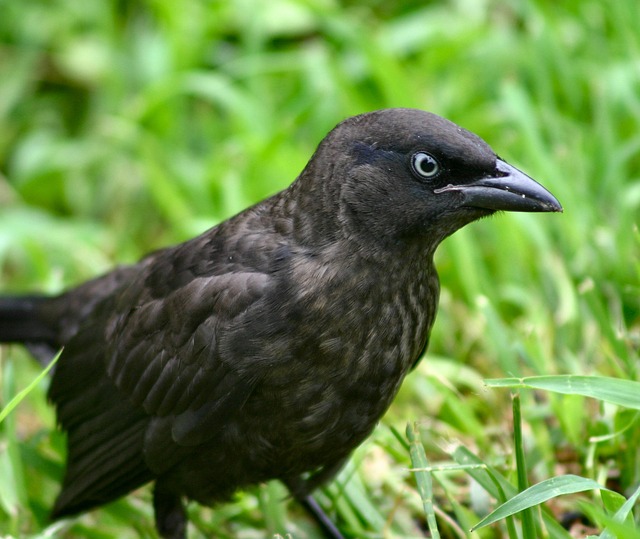 | Brewers Blackbird |
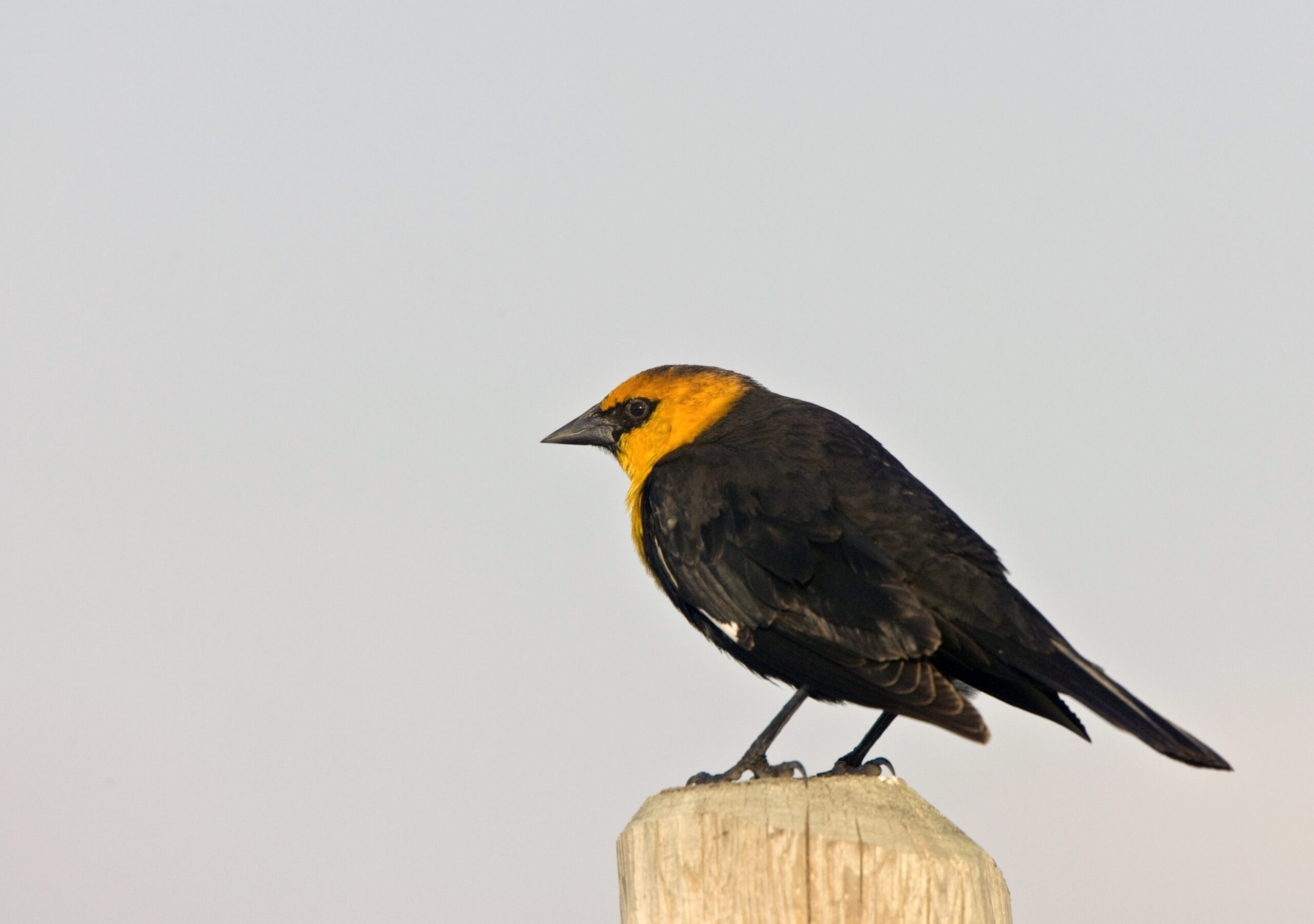 | Yellow-Headed Blackbird |
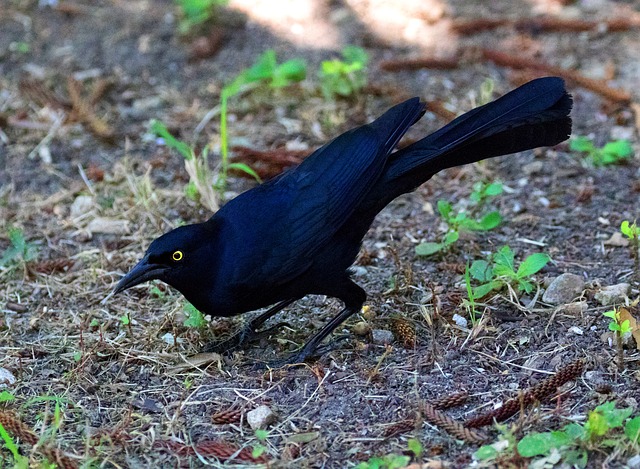 | Great-Tailed Grackle |
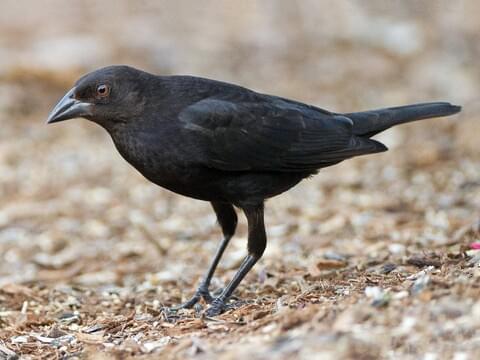 | Bronzed Cowbird |
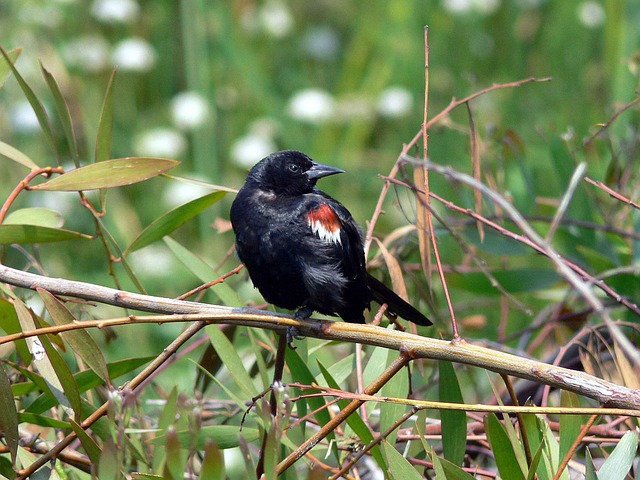 | Tricolored Blackbird |
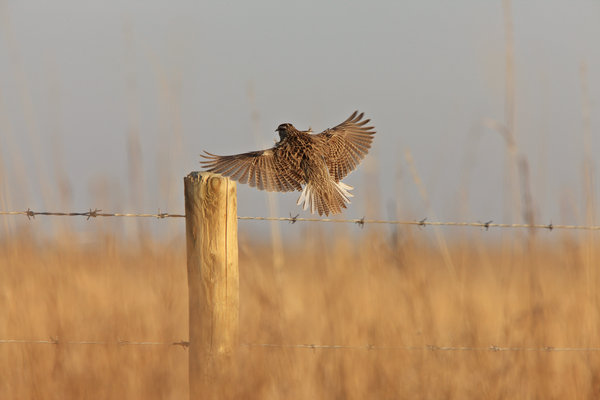 | Bobolink |
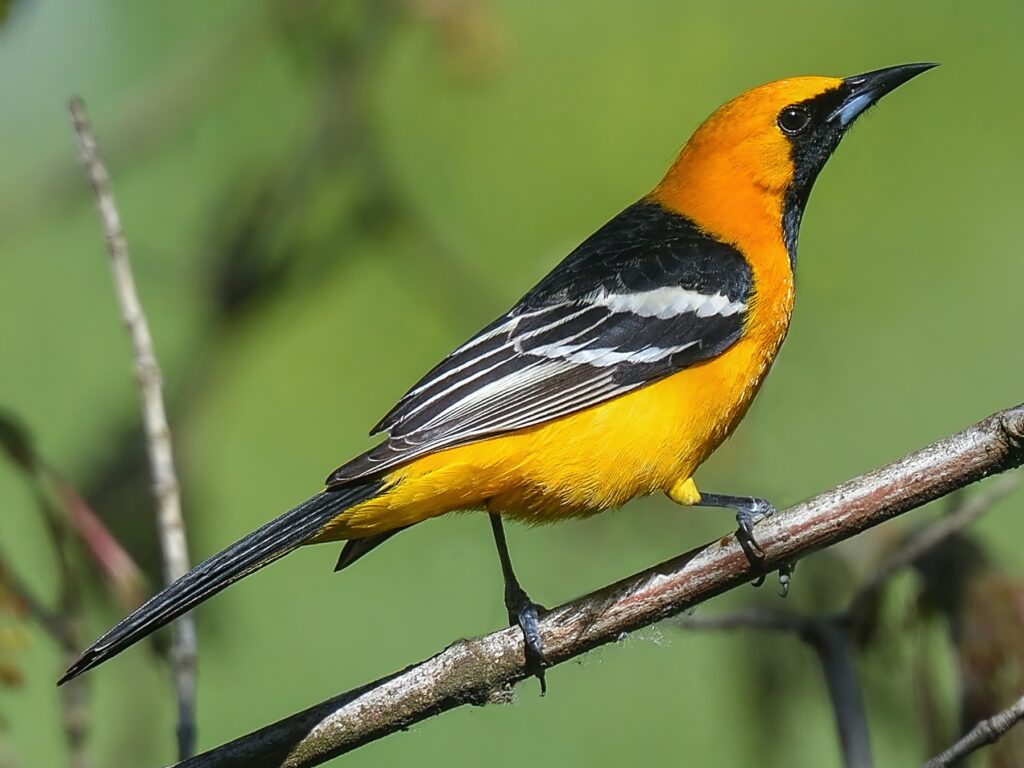 | Hooded Oriole |
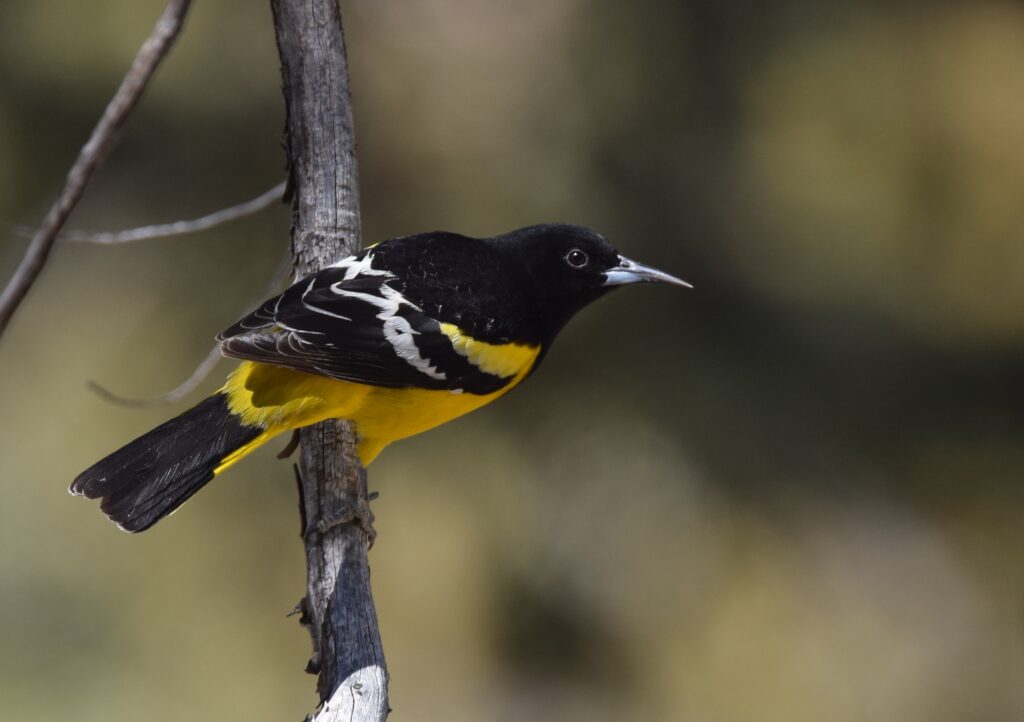 | Scott’s Oriole |
Types of Black Birds in California
1. Red Winged Blackbird
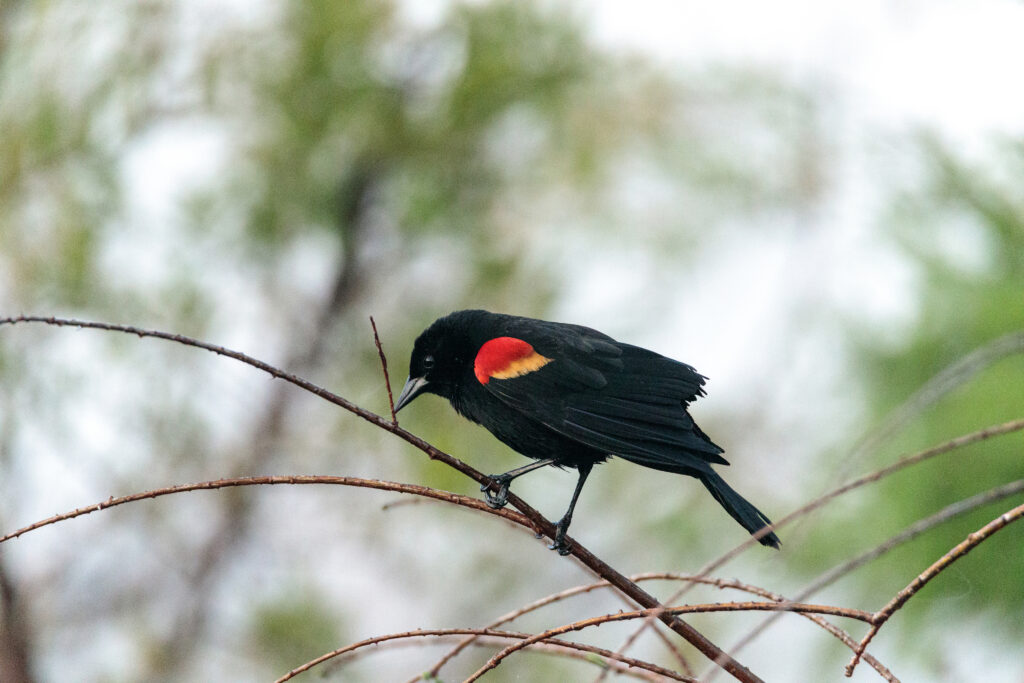
The Red-winged Blackbird is one of the most frequent black birds across California during the summer and is among the state’s most frequent birds overall.
Male and female California blackbirds may be clearly distinguished from one another.
The male Red-winged Blackbird is all black except for the crimson bars on his wings.
Whereas males are uniformly dark, females (and young) have varying degrees of blackness interspersed with brown and white.
This blackbird prefers to reside in wide-open spaces, especially those close to water.
Its natural habitats include wetland areas and the shores of lakes.
Apart from the breeding season, when it is most hungry, the Red-winged Blackbird may fly as far as tens of kilometers each day in search of food.
This blackbird relies on seeds for its diet in the cooler months of the year, but during the warmer months of the year, it shifts to eating nearly solely insects.
The Red-winged Blackbird is a resident or a migratory species depending on its location.
When millions of Red-winged Blackbirds gather for the evening, the sound of their wings flapping quickly is deafening.
To stake his claim on prime real estate before the females come in the spring, male Red-winged Blackbirds are often the first to show up.
During the breeding season, male red-winged blackbirds sing from an obvious perch and flash their bright red shoulder spots to entice potential mates.
Once the female has found a suitable partner, she constructs her nest in a dense grove of trees or bushes near a body of shallow water.
The male she has selected will thereafter protect the nest against intruder blackbirds.
Most powerful guys are bigamous, meaning they can mate with many females at once.
The male Red-winged Blackbird’s distinctive Ok-raa-lee song may be heard in a variety of California’s wetland habitats.
2. Brown-Headed Cowbird

While cowbirds and other blackbirds have a common ancestor, they vary greatly in one important respect: cowbirds are parasitic.
Throughout California, the Brown-headed Cowbird is a known brood parasite.
A bird that doesn’t make its own nest but rather lays its eggs in those of another species is called a brood parasite.
Hundreds of different bird species may have their eggs contaminated by Brown-headed Cowbirds.
Some of the host species that Cowbirds prey upon realize that the parasite eggs are foreign and so reject them.
The majority of hosts incubate Cowbird eggs and treat the chicks as their own.
If you’re in California and you spot a little bird, like a warbler, caring for a baby bird that’s double its size, that’s a Cowbird.
The true adult male head of a Brown-headed Cowbird has a rich chocolate color, while the rest of the bird is shiny black.
In contrast, females have a flat gray-brown coloration.
Cowbirds are so named because they often accompany huge animals like buffaloes and cattle in order to feast on the insects and other tiny creatures that are frightened away by them.
Although this blackbird is often seen across California all year round, it is nomadic during the winter months when it is in quest of food.
Brown-headed Cowbirds often join mixed groups of starlings and blackbirds when foraging for food on the ground.
The Brown-headed Cowbird is a kind of loud blackbird known for its clicking and whistling calls.
3. Brewers Blackbird

The Brewer’s Blackbird seems to prefer human-modified habitats over more natural ones over most of its habitat.
This blackbird avoids urban regions because of competition from the Common Grackle; rather, it thrives in rural locations.
Brewer’s Blackbirds, like many other species of blackbird, gather in great numbers in the fall to feed on stray grains left on fields after harvest.
The Brewer’s Blackbird possesses a long tail and legs and is roughly the size of a robin.
Birds’ tails seem broader and rounder, whether they’re sitting on the ground or sitting on a tree.
In the adult, male Brewer’s Blackbird, the purple shine on the head fades to a greenish color as it travels down the body.
Unlike males, ladies and young of this blackbird has a more consistent brown coloration across their bodies; the wings and tails are the darkest.
Brewer’s blackbirds are common across meadows, grasslands, and even urban parks and lawns due to their preference for open environments.
The Brewer’s Blackbird is one of the state’s rarest birds and is only regularly spotted by birders during the spring and autumn migrations.
4. Yellow-Headed Blackbird

The Yellow-headed Blackbird is a regular sight across the western United States, especially in California.
The male adult Yellow-headed Blackbird is easily recognizable by its bright yellow head and breast, which stands in stark contrast to its otherwise all-black appearance.
The females and chicks of this species of blackbird are dull in appearance, with dull yellow crowns and dark brown bodies.
During the mating season, male Yellow-headed Blackbirds might pair with many different females, creating tiny nesting colonies.
During the non-breeding months, Yellow-headed Blackbirds may be seen feeding in large groups on discarded grains on fields, sometimes in the company of other blackbird species.
This blackbird often feeds in fields and spends the winter among cultivated open fields.
During the summer, their diet shifts to mostly consist of insects and other tiny insects.
Lowland regions with marsh and thick cattail vegetation are typical breeding grounds for Yellow-headed Blackbirds.
This species of blackbird may be spotted throughout the year across California.
5. Great-Tailed Grackle

Although it is a southern blackbird, the Great-tailed Grackle may be found as far north as the southern Midwest.
This particular kind of blackbird is a rather unusual visitor to the Golden State.
Males of adulthood have golden eyes that stand against their glossy black skin.
Females of all ages have a paler underside and a darker top.
The extra-long, wedge-shaped tail is among the most distinctive aspects of these big black birds.
The blackbird’s distinctive V-shaped cross section is created by the middle portion of its tail hanging down.
In this type of blackbird, the females are tiny and possess a shorter tail than the males, giving them the appearance of being a separate species.
Great-tailed Grackles are known for their raucous roosting habits, which they do in trees and on power lines.
In cities, they fight over trash, while in the countryside, they pick fights with other blackbirds for the best worms.
The huge trees that border wetlands, lagoons, and marshes offer nesting and roosting sites for this blackbird throughout its breeding area.
Great-tailed Grackles may be seen foraging in wide farmland, cultivated regions, and even urban settings like vast lawns in parks after the mating season is over.
6. Bronzed Cowbird

A strong blackbird with a curled, pointy beak, the Bronzed Cowbird is a unique species.
The males’ bronzed coloration gives this bird its common name.
Brood parasites like the Bronzed Cowbird and the Brown-headed Cowbird both use other birds’ nests to raise their young rather than constructing their own.
During the breeding season, the male puffs up the feathers on his nape, giving the impression that his neck is unusually thick.
To entice females, males may sometimes undertake a “helicoptering” flying show.
The adult males of this species of blackbird are glossy black having a bronze tint, and bright red eyes.
Gray-brown is the typical female color across California.
These blackbirds often gather in flocks to search the ground for food, such as insects and seeds.
The Bronzed Cowbird is a common sight on suburban golf courses as well as in more rural settings.
7. Tricolored Blackbird

The overall plumage of male Tricolored Blackbirds and male Red-winged Blackbirds seem quite similar.
Apart from a little red shoulder spot with a white stripe below, their entire body is shimmering black.
They differ from Red-winged Blackbirds in that they have a narrower red shoulder spot and a wider white line below it.
Historically, California was home to millions of flocks of tricolored blackbirds.
However, fewer than forty thousand individuals make up the whole California population, making them critically endangered owing to the widespread destruction of coastal wetlands and marshes.
Fortunately, there’s hope for the existence of the Tricolored Blackbird since they have begun nesting not just in wetlands but also in cultivated areas.
8. Bobolink

Besides the common blackbird, the Bobolink may also be spotted in the Golden State.
Southern Canada and the northern United States are the only breeding grounds for this critically endangered species of the blackbird.
Open, barren areas are ideal for it.
The adult male Bobolink is largely black save for the white on its back and wings and the cream hue on its crown.
Females and young birds of this type of blackbird are significantly harder to see.
There is no white spot on their wings, and they’re brown on above and light yellow underneath.
Helicoptering is a territorial show performed by males in the springtime to entice females and mark their territory by singing loudly while hovering in the air.
Not only have Bobolink populations declined in breeding grounds, but also in wintering grounds.
Destruction of their habitat and haying during the breeding season is to blame for this alarming fall in blackbird populations.
Long-distance migrants, these blackbirds spend the Central American winters in warmer climes.
When the blackbird migrates across California in the fall and spring, it is easier to spot.
9. Hooded Oriole

The Hooded Oriole is a California state bird and is also widespread in the southern United States.
The Hooded Oriole is an easily identifiable bird because of its bright yellow underbelly and throat.
Its neck, back, tail and wings are striking jet black, making it stand out even more from the brilliant yellow sections.
The Hooded Oriole has turned to nest atop the ubiquitous palm palms of Southern California suburbia.
The Hooded Oriole’s distribution in the southwestern United States has grown due to a rise in the number of palm trees and the availability of nectar-rich feeders.
This species of oriole enjoys nectar and is sometimes seen in California feeders that provide nectar or grape jelly as a treat for birds.
10. Scott’s Oriole

The Scott’s Oriole is a widespread breeding bird throughout California and the rest of the Southwestern United States.
The bright yellow on the underside of the feathers of a Scott’s Oriole, a medium-sized bird, makes it stand out immediately.
However, the yellow coloring is limited to the bird’s underbelly.
The bird’s whole body, including its head, back, chest, tail, and wings, is a magnificent jet black.
The desert oriole, or mountain oriole, is a well-known species of centered that lives mostly in arid parts of Central Mexico and the southeastern United States.
It is as at home in thick stands of oak trees as it is in more open areas with a smattering of trees and yucca.
Since yucca nectar is the oriole’s preferred food source, it is not uncommon to see them at feeders in California that provide nectar or sugar water.
Conclusion
In conclusion, California is a haven for bird lovers, with a diverse array of black birds that grace its skies and landscapes.
From the iconic raven, known for its intelligence and mystery, to the strikingly beautiful blackbirds with their iridescent feathers, these birds are a true spectacle to behold.
Whether you’re exploring the coastal areas, the mountains, or the deserts of California, keep an eye out for these 10 types of black birds and marvel at their unique characteristics and behaviors.
So next time you’re out and about in the Golden State, don’t forget to keep your eyes peeled for these amazing black birds that add a touch of elegance and mystique to California’s vibrant birdlife.
Happy bird watching!
FAQ
Where can I spot black birds in California?
Black birds can be found throughout California in various habitats, such as forests, coastal areas, wetlands, grasslands, deserts, and urban areas. Look for them perched on trees, flying in flocks, foraging on the ground, or singing from high perches.
What are some distinctive features of black birds in California?
Black birds in California exhibit unique features. For example, Common Ravens are large with glossy black feathers, wedge-shaped tails, and a deep, croaking call. Red-winged Blackbirds are smaller with black feathers and bright red shoulder patches on males. Yellow-billed Magpies have striking black-and-white plumage with a long, yellow bill.
Are black birds in California migratory or year-round residents?
Some black birds in California, such as the Western Bluebird and Black-capped Chickadee, are year-round residents, while others, like the Brewer’s Blackbird and Great-tailed Grackle, are partial migrants. Some species, such as the Tricolored Blackbird, may migrate locally within the state depending on the season.
What is the ecological significance of black birds in California?
Black birds play important ecological roles in California’s ecosystems. For example, ravens are known as scavengers and help clean up carcasses, while Red-winged Blackbirds are seed dispersers and insect eaters. Yellow-billed Magpies are known to eat insects and small mammals, helping to control populations of pests.
Are there any conservation concerns for black birds in California?
Yes, some black bird species in California face conservation concerns. For example, the Tricolored Blackbird is listed as a California Species of Special Concern due to habitat loss and nesting site disturbance. Conservation efforts are underway to protect their populations and habitats.
How can I help conserve black birds in California?
There are several ways you can contribute to the conservation of black birds in California. These include supporting local conservation organizations, participating in citizen science projects to monitor bird populations, advocating for habitat protection, and practicing responsible bird watching, such as avoiding disturbance to nesting sites and respecting wildlife regulations.
Can I attract black birds to my backyard in California?
Yes, you can attract black birds to your backyard in California by providing appropriate food, water, and shelter. Black oil sunflower seeds, suet, and mealworms are some common food options. Creating bird-friendly habitats with trees, shrubs, and bird baths can also make your backyard more attractive to black birds and other bird species.
Are there any interesting behaviors of black birds in California?
Yes, black birds in California exhibit fascinating behaviors. For example, ravens are known for their intelligence and problem-solving abilities, while Red-winged Blackbirds are known for their impressive displays and territorial behaviors. Yellow-billed Magpies are known for their intricate nests and complex social behaviors.
Can I interact with black birds in California?
While observing black birds from a distance is the best approach to avoid disturbance, some black birds in California, such as the Yellow-billed Magpie, may be curious and may approach if you are patient and still.
Last Updated on April 25, 2023 by Lily Aldrin
